Table of Contents
- 1 Packing Your Heirlooms Safely: How to Make Sure They Arrive in One Piece
- 2 What’s the Best Way to Pack Antiques When Moving?
- 3 Material Matters: Selecting the Best Packaging for Your Antiques
- 4 Transportation Advice: Safely Moving Antiques
- 5 Professional Help: Expert Options for Heirloom Packaging
- 6 Author
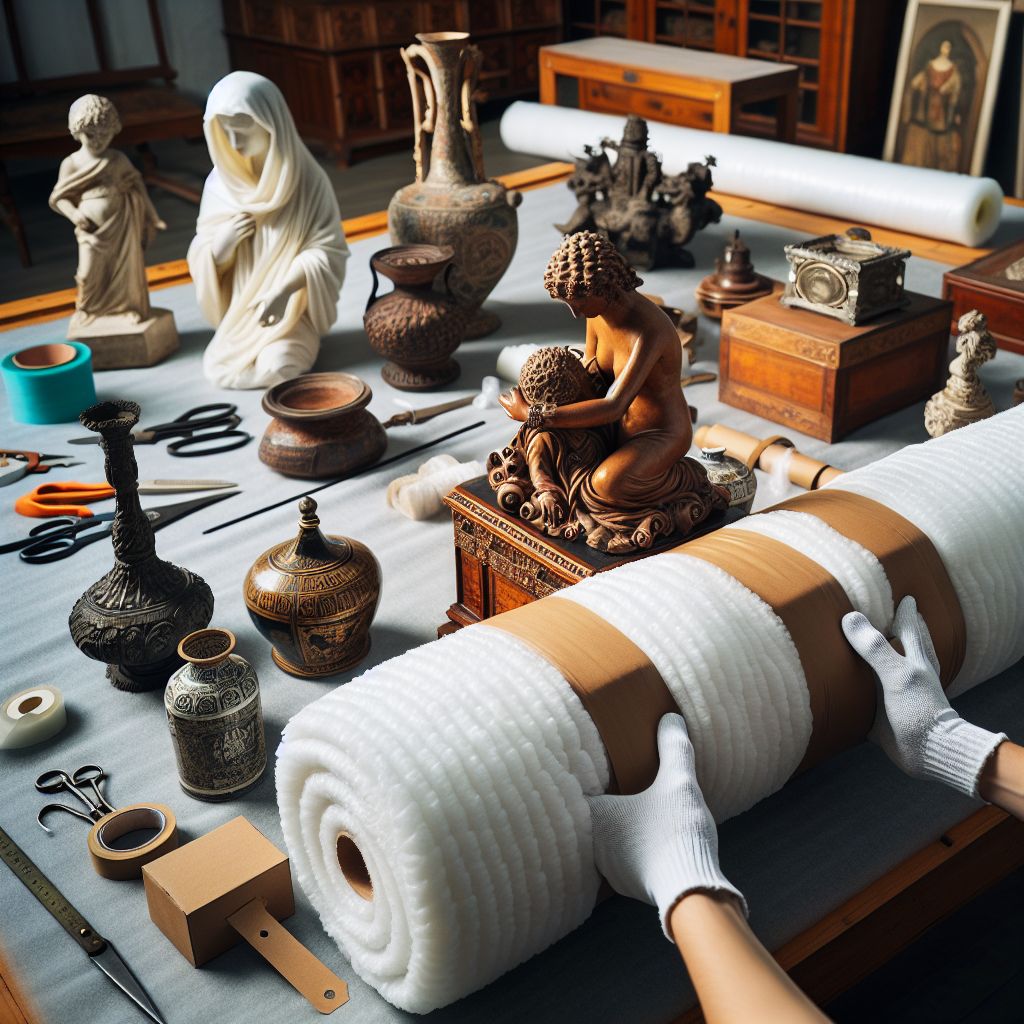
What You Need to Know
-
Wrap antiques in soft, acid-free materials to avoid scratches and chemical damage.
-
Choose strong, double-walled boxes that can hold the weight of heavy heirlooms.
-
Mark boxes with ‘Fragile’ and ‘This Side Up’ to ensure they are handled carefully during the move.
-
Think about custom crating for items that are unusually shaped or especially delicate.
-
Document the condition of your items before packing and think about getting insurance for extra protection.
Packing Your Heirlooms Safely: How to Make Sure They Arrive in One Piece
When you need to move your precious antiques, each one has its own story, and you don’t want that story to end with a scratch, a crack, or something even worse. Whether it’s your grandmother’s china or an old vase, your aim is to get them to their new home in the same state they were in when they left their old home.
The Importance of Proper Packaging
Antiques are not just old things; they are pieces of history, unique relics from our past. This is why it is so important to pack them properly. It’s not just about keeping them in one piece; it’s about preserving our link to the times and people who came before us.
Picking the Right Tools: Choosing the Best Supplies
The first step in keeping your heirlooms safe is selecting the right materials. Acid-free packing paper, bubble wrap, and sturdy packing tape are all must-haves. Don’t cut corners here; your antiques deserve the best protection we can give them.
What’s the Best Way to Pack Antiques When Moving?
Let’s go over the process of packing your antiques safely. Keep in mind, it’s not just about wrapping and boxing items; it’s about giving each piece the special care it needs.
How to Pack Antiques Securely: A Step-by-Step Guide
-
First, examine each antique, noting any existing damage or weak spots.
-
Wrap antiques in soft, acid-free paper, followed by bubble wrap for padding.
-
Secure the wrapping with high-quality packing tape, but never let the tape touch the antique directly.
-
Fill hollow antiques with packing material to prevent them from being crushed.
How to Wrap Fragile Items
For those especially delicate antiques, how you wrap them is everything. Think of it as dressing them in layers of protection. Start with the softest materials closest to the antique, and gradually add the toughest, most shock-absorbent layers on the outside. For more detailed information, check out our guide on the hidden costs of home packing and moving, which includes tips on securing valuables.
More Than Just Boxes: Selecting the Right Protective Packaging
Just like picking out the perfect house for your family, selecting the right box for your antique is all about size, durability, and security. The item should fit snugly to avoid shifting, and the box itself should be strong enough to withstand any outside forces.
For instance, when I had to pack a stained glass window that was over a hundred years old, I opted to use a wooden crate that was custom-built and lined with foam. This approach provided a sanctuary for the glass that could absorb shock, as well as a structure that was stable enough to endure the jostling that comes with transportation.
Most importantly, after you’ve packed your items, give the box a gentle shake. If you hear anything moving, it’s time to open it back up and add more padding. The goal is for the contents to be so well-secured that they seem to be one with the box.
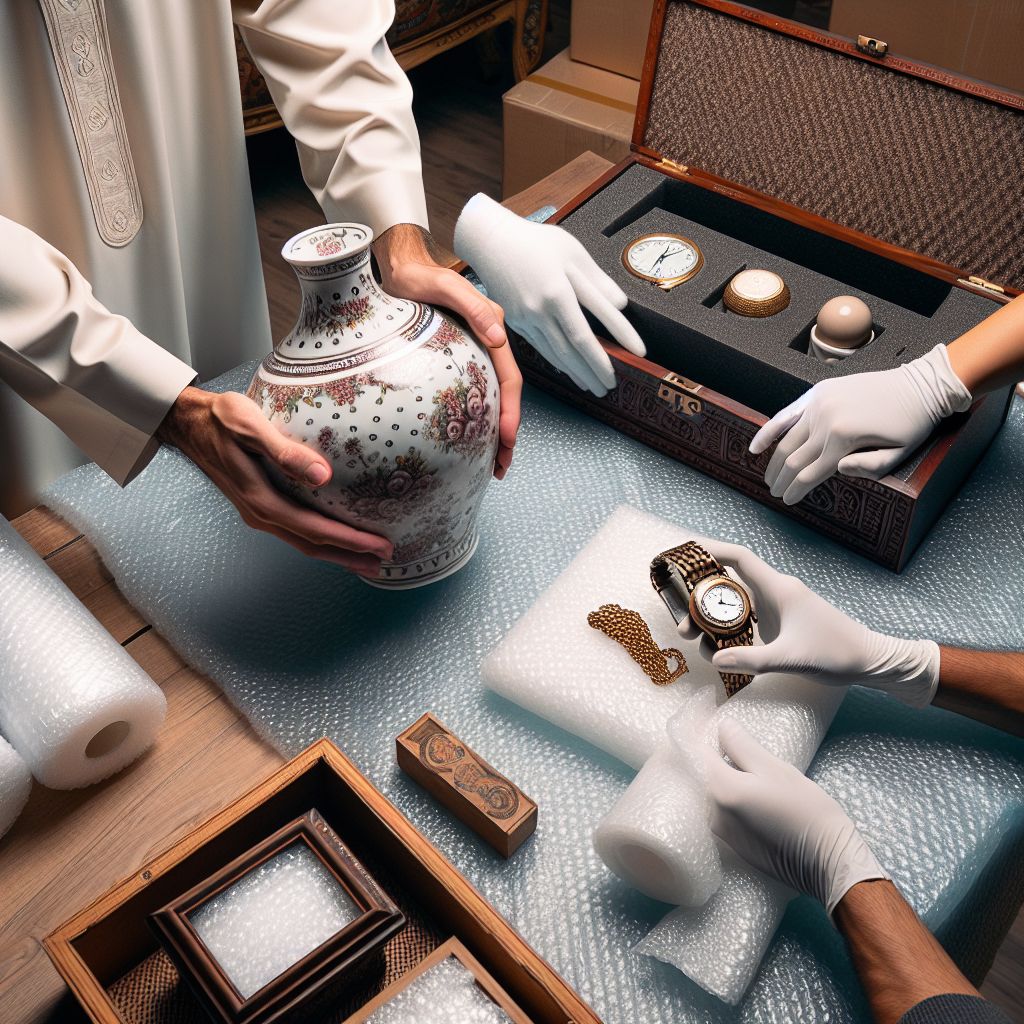
Material Matters: Selecting the Best Packaging for Your Antiques
Picking the right packaging materials for your antiques isn’t just about safety, it’s about preservation. You want to protect your valuables from the rigors of transport while keeping them in their current state. This means guarding against physical jolts, environmental conditions, and any chemical reactions that could harm fragile finishes. For more insights, read about packing, protecting and storing collectibles and antiques.
Take a Victorian-era mahogany chair, for instance. To pack it, you should first wrap it in acid-free tissue paper, which won’t react with the wood’s finish. Then, add layers of bubble wrap for cushioning and place it in a custom-sized box.
Soft materials like acid-free tissue paper, cotton gloves for handling, and foam padding are crucial for protecting surfaces and preventing scratches. For extra cushioning, use bubble wrap. Secure loose parts with twine or cotton straps instead of adhesive tape, which could leave residue.
The Art of Cushioning: Using Soft Materials
The proper cushioning can be the difference between your heirloom arriving in pristine condition or with unanticipated damage. Utilize materials such as acid-free tissue paper, archival-quality cushioning, or even soft, natural cloths to create a soft barrier between your antique and the outside world. The goal is to pad every curve to prevent rubbing, which can be particularly detrimental to polished or gilded surfaces.
Begin wrapping at the most vulnerable points, like the arms of a chair or the ornate details of a carved frame. These are the areas that are most prone to bumps or scrapes, so they should be given extra attention.
Creating Barriers: Defense Against Moisture
Moisture is a quiet foe to antiques, silently infiltrating and causing destruction with rust, mold, and mildew. To fight this, once you’ve wrapped your items in soft materials, cover them in plastic wrap or put them in ziplock bags. This forms a barrier that moisture can’t get through. Silica gel packets can also be included to soak up any moisture that does manage to get in.
Don’t forget, even though plastic is excellent for managing moisture, it should never come into direct contact with your antiques because it can lead to condensation. There should always be a buffer layer of fabric or acid-free paper.
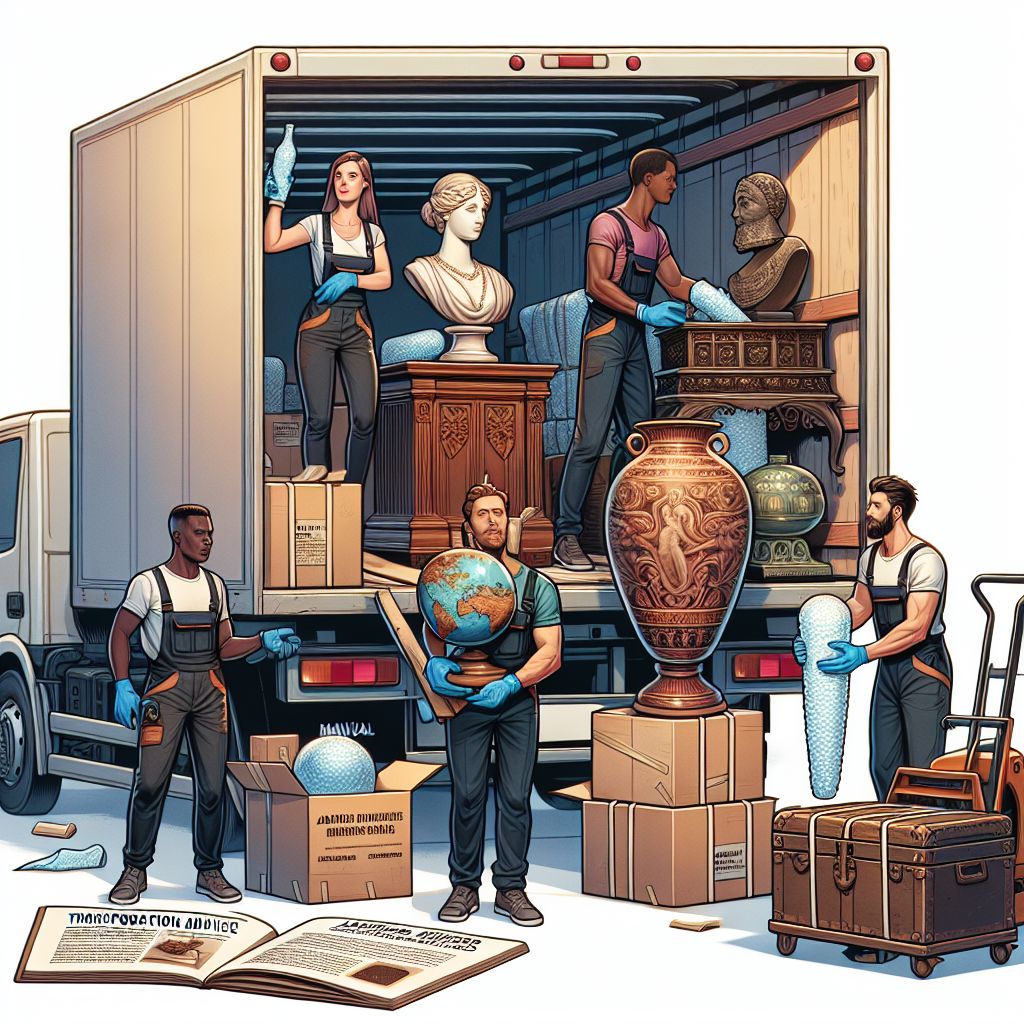
|
Aspect |
Antique Items |
Regular Items |
|---|---|---|
|
Age Requirement |
Must be at least 100 years old to be classified as antique. |
Not based on age; can be any age. |
|
Material Composition |
Antique furniture is almost always solid wood, durable, and long-lasting. |
Modern furniture is often made from laminate, veneer, or synthetic materials that may not be as durable. |
|
Character Markings |
Dents and scratches in antique furniture are seen as character markings, signs of use and history. |
Dents and scratches in modern furniture may be considered flaws rather than character markings. |
|
Value Consideration |
Antique items can hold or increase in value over time, especially if well-maintained. |
Regular items may depreciate in value over time. |
|
Sturdiness |
Antique glassware and silverware are often sturdier than vintage counterparts. |
Modern glassware and silverware may not be as sturdy due to different manufacturing processes. |
|
Packaging Approach |
Antique items may require more delicate handling and specialized packaging to preserve their value. |
Regular items may be packaged using standard methods without the need for specialized care. |
This table outlines the key differences in packaging considerations between antique items and regular items, emphasizing the unique characteristics and requirements associated with handling and transporting antique pieces.
Transportation Advice: Safely Moving Antiques
Once your antiques are safely packed, the next step is to consider how they will travel to their new home. Whether you’re moving across town or across the country, having a solid transportation plan is essential for keeping your valuables secure.
When moving locally, you may be able to transport smaller items in your own car, as long as they are secure and won’t fall or move around. If you’re dealing with larger items or moving a long distance, it’s worth investing in professional movers who specialize in antiques.
Weighty Matters: Managing Your Most Massive Mementos
Bulky items such as furniture not only need strength but also planning. Always lift from the most robust points—never from fragile areas like legs or arms. If you’re unsure about your capacity to move a bulky piece securely, this is when you should bring in experts. They possess the tools and knowledge to carry out the task without endangering themselves or your antiques.
Choosing a Reliable Carrier: How to Select a Trustworthy Transporter
-
Do your homework and choose a carrier that has a good track record with antiques.
-
Ask them about their insurance coverage and make sure it’s enough to cover your valuables.
-
Ask about their transportation process. Do they use air-ride suspension vehicles? Do they have climate-controlled environments?
By taking these steps, you’re laying the groundwork for a successful move. And remember, the cheapest option isn’t always the best when it comes to the safety of your heirlooms.
If you’re not sure about any part of the process, it’s a good idea to get advice from professionals. They can provide you with solutions that are specifically designed for your collection and transportation needs.
After learning how to properly pack and move your antiques, it’s important to remember that patience is key. If you rush, you’re more likely to make a mistake. And when it comes to your valuable items, that’s a risk you don’t want to take.
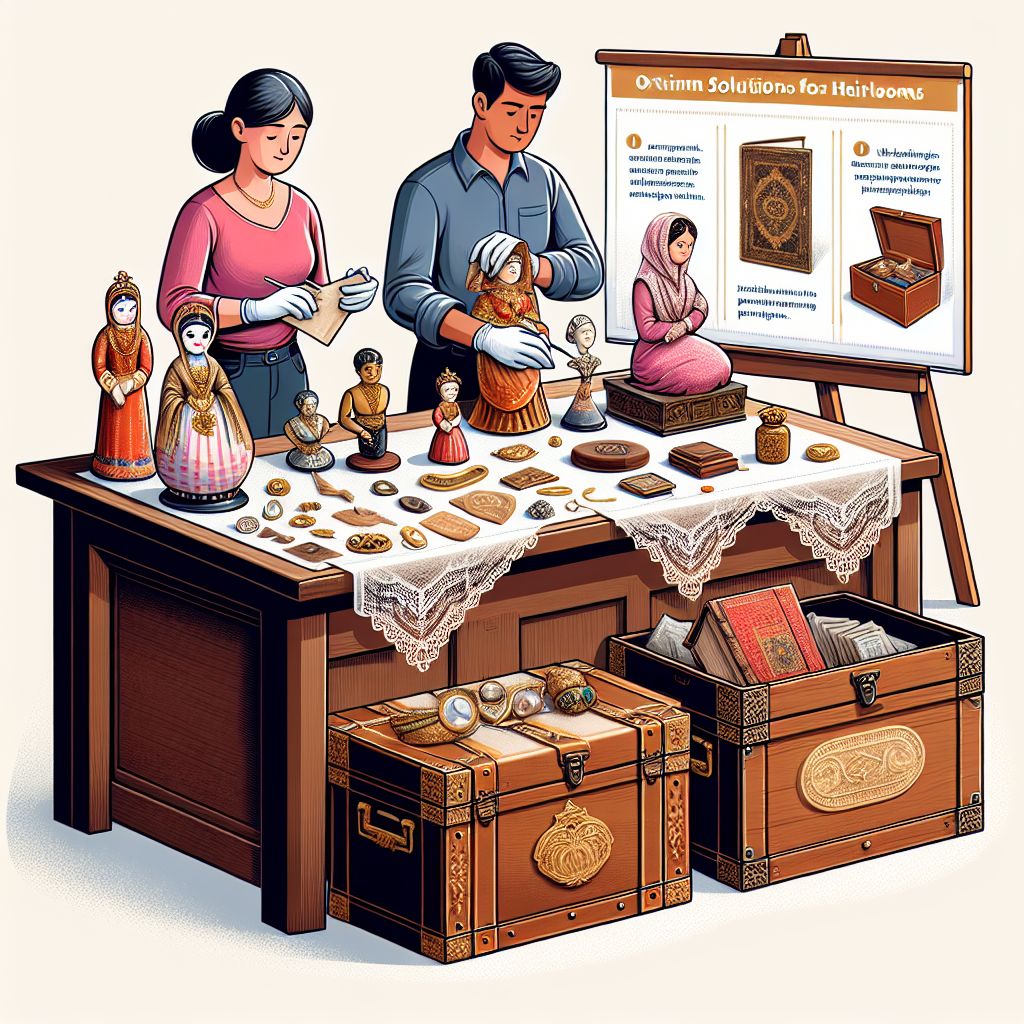
Professional Help: Expert Options for Heirloom Packaging
Many antique owners prefer to do it themselves, but there’s no harm in seeking professional help, especially when dealing with items of high monetary or sentimental value. Expert services provide not only the correct materials and methods but also the peace of mind that comes from knowing your heirlooms are being handled by professionals.
When you’re prepared to give your treasures the best protection, get in touch for expert antique packing and moving services. We’ll handle your heirlooms with the respect they deserve.
Specialized Packaging Services
Expert packaging services can offer tailored solutions for each item in your collection. They recognize that when it comes to antiques, a one-size-fits-all approach doesn’t work. They offer everything from custom-made crates to soft packing specifically designed for your most delicate items.
When you use a professional service, you can look forward to:
-
Each item is packaged and crated in a custom way, according to its specific needs.
-
We offer transport options that are climate-controlled for pieces that are sensitive to temperature.
-
There are options for insurance coverage to protect against unforeseen circumstances.
When you choose to use a professional service, you are choosing to invest in the preservation and longevity of your collection. This is a decision that will pay off, not only in the safe arrival of your antiques, but also in the continued value and enjoyment they bring to your life.
Keep in mind, these items are not just things, they are physical connections to our past. Ensuring they are packed and moved safely isn’t just a practical matter, it is a way to respect our history and keep it safe for future generations.
If you’re looking for a professional touch when it comes to moving your valuables, we’re here for you. Don’t be shy, Get in Touch with us for more details on how we can help protect your precious antiques during their move.
If you cherish the sentimental and historical value of your antiques, it’s crucial to make sure they are transported safely. Here are some steps you can take to protect your prized possessions during a move.
FAQ: Caring for Your Antiques
What materials should I avoid when packing antiques?
When packing antiques, stay away from materials such as regular newspaper, which can leave ink stains and harm fragile surfaces, or packing peanuts, which can create static and draw dust. Avoid any acidic or colored materials that could interact with your items over time.
What’s the best way to pack a fragile porcelain heirloom?
When packing a fragile porcelain heirloom, start by wrapping it in acid-free tissue paper. Then add a layer of bubble wrap. Secure the bubble wrap with tape, but make sure the tape doesn’t come into contact with the porcelain. Place the wrapped item in a box with soft packing material, making sure it can’t move around.
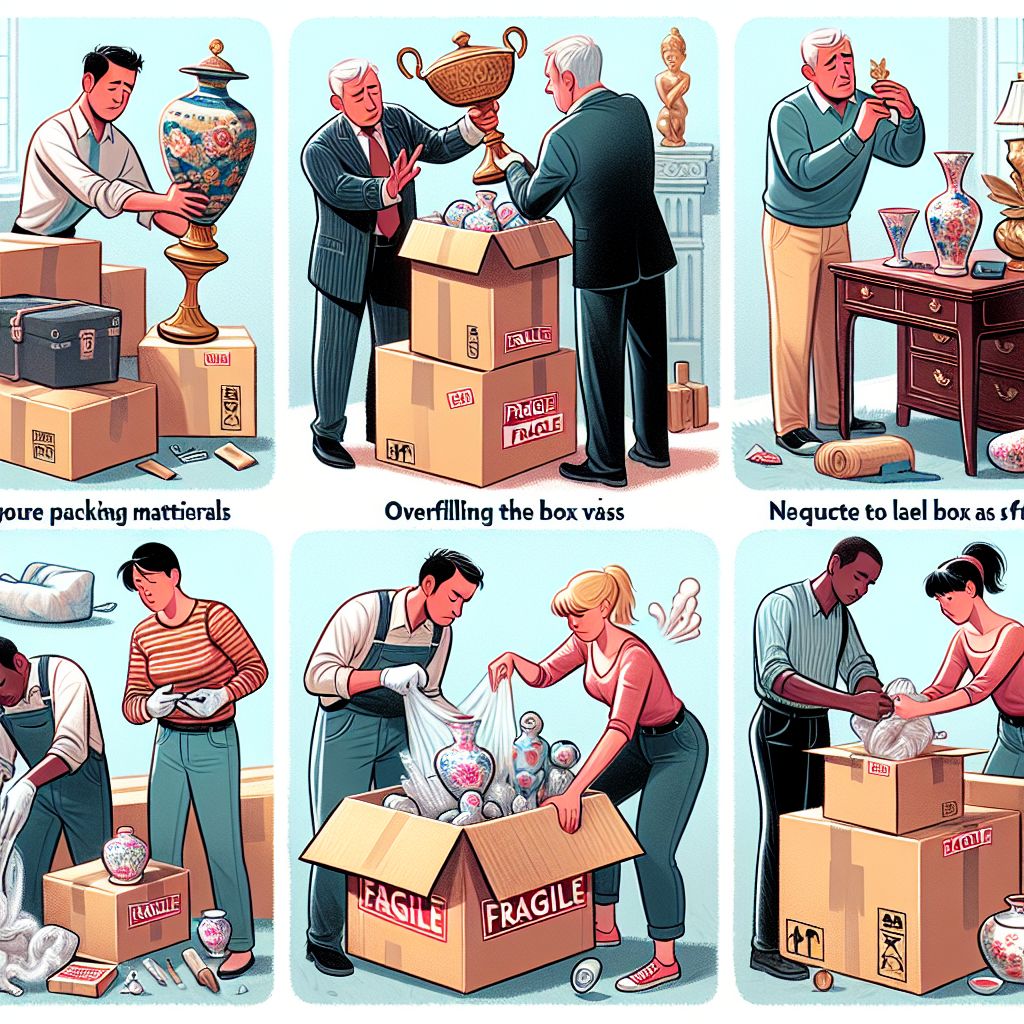
What are the most frequent errors people commit when packing antiques?
Frequent errors include not giving enough importance to adequate padding, applying tape directly on the antiques’ surface, and picking boxes that are too big, which lets items move while in transit. Additionally, not marking boxes as ‘fragile’ may result in movers mishandling them.
What steps should I take to prepare a large piece of antique furniture for moving?
-
Take apart any parts that can be removed, such as drawers or shelves, and pack them separately.
-
Wrap the furniture in moving blankets or acid-free tissue paper, then add a layer of bubble wrap.
-
Secure the padding with packing tape, making sure it doesn’t touch the furniture’s surface.
-
Use corner protectors to safeguard edges and corners.
-
Consider custom crating for extremely valuable or fragile pieces.
Is it possible to insure my antiques while they are in transit, and if so, how can I do this?
Yes, it is possible to insure your antiques while they are in transit. Start by getting an appraisal to determine their value. Then, talk to your insurance provider about adding a rider to your homeowner’s policy or purchasing a separate transit insurance policy. Ensure the coverage is adequate for the value of your antiques and that it covers all potential risks during the move.
Wrapping up, the process of transporting antiques and heirlooms doesn’t have to be a nerve-wracking experience. By adhering to the tips mentioned above, you can guarantee the protection and conservation of your precious collectibles. Keep in mind to be patient, utilize appropriate supplies, and think about hiring professional help if needed. Your antiques are a reflection of your past and merit the highest level of care.



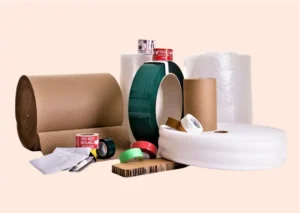
Leave a Reply